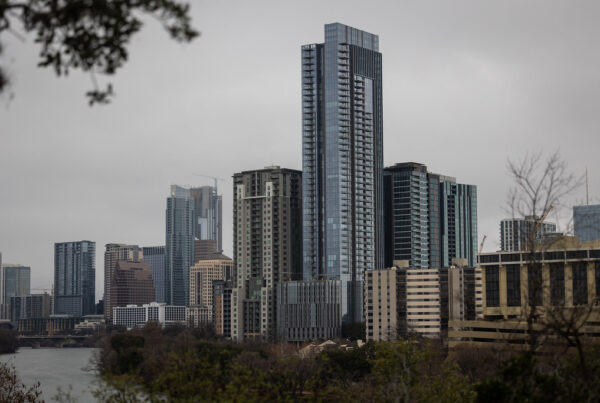A plan to expand Big Bend National Park by a few thousand acres is expected to take a big step forward this year, as a non-profit prepares to acquire private land along a vital desert creek with the goal of eventually donating the land to the park.
While the effort is still far from a done deal, supporters say growing the park would protect an ecologically sensitive part of the Big Bend region at a time when the booming local tourism industry is prompting concerns about overdevelopment.
Hiking up a rocky hill near Terlingua earlier this month, John Morlock showed off the sweeping views from his quiet little spread of desert, located right next door to the national park.
“Halfway across this desert flat is the park boundary,” Morlock said, pointing out over the jagged terrain toward the park’s Chisos Mountains and Santa Elena Canyon, all seemingly just a stone’s throw away.
Morlock is retired now, but worked for decades in the Big Bend with the National Park Service. (Disclosure: he’s also the father of Marfa Public Radio’s business manager.) He’s owned property along the important watershed of Terlingua Creek for about 40 years, and now he’s helping lead an effort to better protect the creek and even restore it to its former glory.
Morlock shared an anecdote he’d once read about the early days of ranching in the area.
“A cowboy rode up onto the rise where we’re standing right now, and he described it as, ‘Wow, there’s enough cottonwood [trees] to shade 1,000 head of cattle,” he said.
There are much fewer trees on the creek these days, thanks in part to all the mining that happened here in the early 20th century.
“All of those trees were removed to be support or fuel for the mining operations in the Terlingua area,” said Megan Bean, a fisheries expert with the Texas Parks and Wildlife Department. “That has really changed the dynamics of how the streams in these areas work.”
To try and restore the creek’s health, conservationists are pushing to expand Big Bend National Park’s western boundary by as much as 6,000 acres. Terlingua Creek is currently a state-designated Ecologically Significant Stream Segment, meaning it’s already a focus of state-led conservation efforts.
The growth this popular tourist region has seen in recent years with things like new campgrounds and AirBNBs has sparked new fears about the creek and the surrounding ecosystem’s future.
“I’m concerned about the level of development that’s occurring,” Morlock said. “I don’t think there’s enough resources to support so much of the building that seems to be ongoing and planned.”
According to retired Big Bend wildlife biologist Raymond Skiles, who’s also involved in the expansion effort, it’s hard to say how much the area’s recent growth has stressed the creek compared to the more than 100 years of mining and ranching this area’s seen.
“Certainly the development in the area means more wells being drilled, and that does take water from the aquifer, the subterranean flow that supports surface flow,” he said. “It’s certainly nothing different than what is kind of standard throughout the desert.”
The non-profit Big Bend Conservancy is leading the park expansion plan. The group said in early February that it’s set to acquire an initial 4,000 acres of private land from a well-known local family within the next few weeks, with the goal of eventually donating that land to the national park.
Advocates hope to get other nearby private landowners like Morlock on board to grow the boundary further.
Loren Riemer, who leads the conservancy, said the plan wasn’t solely prompted by all the growth in the area, but she said it is part of the equation.
“This particular piece of property has so many ecologically critical resources on it,” she said. “We wanted to ensure that it maintains its conservation status for generations to come, despite all of that growing growth and development that is happening in the surrounding community.”
According to Megan Bean, the parks and wildlife expert, keeping sensitive lands intact keeps them healthy.
“Even in Far West Texas, a lot of these landscapes are getting subdivided and broken down into smaller and smaller pieces,” she said. “With this kind of large-scale preservation effort, we’re seeing large chunks of a watershed that will remain contiguous, which provides corridors for wildlife to migrate to, or continuous sections of creek that can be restored.”
The national park itself supports the expansion plan, but Congress would have to approve it to actually make it happen.
Lawmakers are not yet considering a bill on the matter, but supporters say they expect to see one filed. Republican U.S. House Rep. Tony Gonzales, who represents the Big Bend region, said he supports the plan, and that it would be a “win-win for all of those involved.”













